At first glance, the obscenely unproportioned Avenue of the Baobabs tree-like beings seems alien. What are they doing here? What do they want?
This post may contain affiliate links, which means I may earn a commission if you click a link and make a purchase. As an Amazon Associate, I earn from qualifying purchases.
Towering over the small, rustic village below they can easily overshadow the daily lives of the people who live amongst them. Life behind the Baobab alley is, like most of Madagascar, a struggle for survival. What we didn’t expect to find was the beauty of innocence and ignorance.
Table of Contents
The Baobab Tree
The word baobab in the Malagasy langue means“mother of the forest”. And they truly do have mother-like status.
Folktales of the Baobab’s existence follows something like this:
In the beginning, all the trees in Madagascar looked like “normal” trees do. But as the people destroyed the trees over time, god became unhappy. He warned the people of the land that they should treat the forest with respect. But the destruction continued. And so, God took all of the trees out of the ground and turned them upside down. Creating the baobab tree.
It seems like things haven’t really changed. To the locals living in the villages, the baobabs are a source of wood (and stored water in times of drought), but their removal for space to plant rice is much more profitable.
Village protection
In a state of awe, we simply stared at the trees in silence. We experienced both sunrise and sunset at the Baobab Alley. Admiring the power and girth of the beings as the sun rose behind them, is a truly beautiful experience.
At sunrise though, the dogs came out. Semi wild, they protect the village, eating scraps and hassling anyone who they don’t recognize. We had to hide out in the car for 20 minutes until they moved on while a couple of locals watched from a distance.
The dogs are a commodity to the locals. Guarding their homes amongst a thriving bandit-run state.
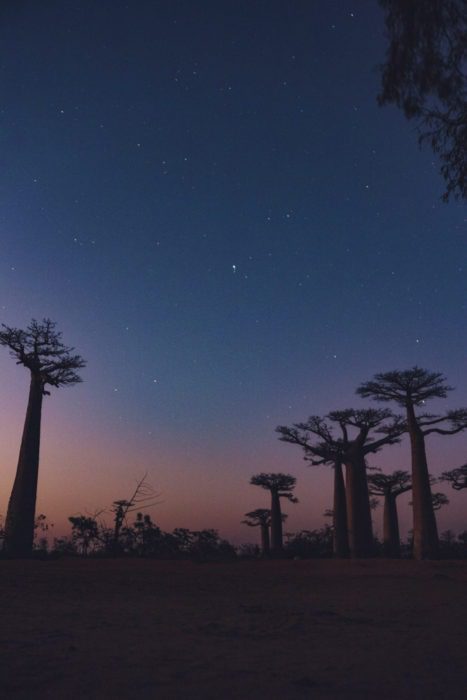
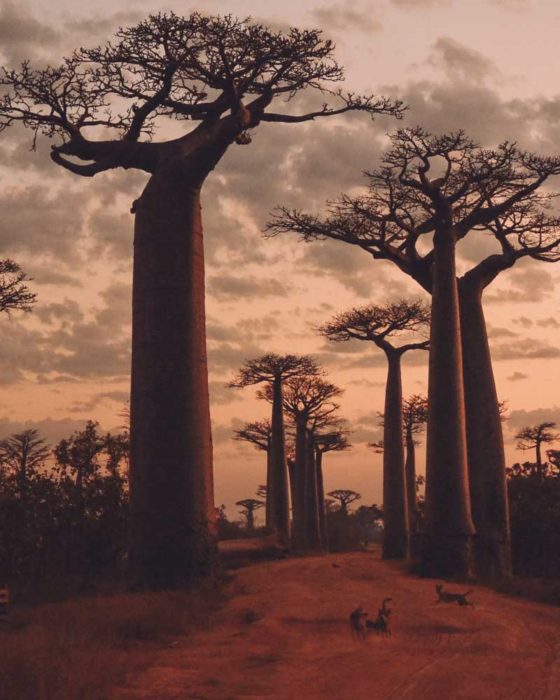
Village Life at the Avenue of the Baobabs
There are no luxuries in the village behind the Avenue of the Baobabs, not even power or running water. Their small homes are built using traditional mud and stick methods. But this did not stop the inquisitive youths from welcoming us with beautiful smiles. As the mothers left to fetch water and the fathers left (on zebu cattle wagons) to plow the rice fields, the village kids approached us with a warm sense of fascination.
It’s best to know Malagasy if you plan to travel anywhere around the country. French can sometimes pass in the larger, more touristy towns, but here, under the Baobabs, it’s Malagasy or nothing.
In our basic level of conversation, they asked us about our hair, where we were from, what we were doing there so early, and finally, if we’d like to visit their village and home. Humble by the offer, we agreed.
The Fallen Baobab Tree
After checking with one of the mothers, who accepted our invitation, the young girls showed us to the fallen baobab tree and their home behind the Avenue of the Baobabs.
The monolithic-looking structure had fallen only an arm’s length from one of the girl’s homes. Life behind the Baobab alley seemed like a terrifying concept, to live under these potentially lethal objects. But the kids did not seem fazed.
They encouraged us to climb the fallen tree which attracted the attention of more kids. Soon after, the local boys had joined and were curiously edging their way closer to us.
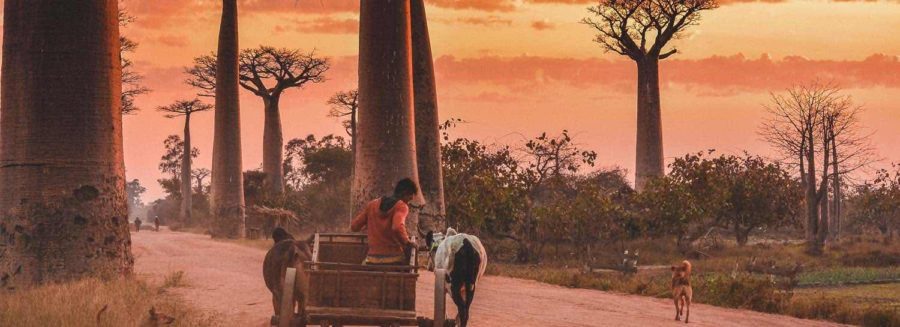
Reaching out a hand. Is it wrong?
The kids, though inquisitive, are also very poor. When they reached out their hands for money it took us a few moments to consider our move.
Unfortunately, in other parts of the country, we’d seen kids being tasked with collecting tourists’ money through awful displays of desperation. Lemurs on ropes and chameleons trapped on sticks are often used for tourist photo opportunities.
Luckily for us, the children in the village were very well mannered, despite their obvious state of poverty. A true sense of wonder and joy was visible in their eyes as they discussed simple Malagasy phrases with their foreign observers.
Engage and respect
While the scene of villagers conducting their daily life in front of the Baobab Alley backdrop makes for a great photo opportunity, we witnessed some unnerving displays of tourism at its worst.
As the sun rose higher and the day took hold. Tourists arrived and rushed to get close-ups of the local villagers. When approached by the kids with hands out they literally swiped them away like flies.
It’s easy to forget that in this surreal world that the people are in fact real, living real lives.
Life behind the Baobab alley is full of genuinely beautiful people trapped in a world run by money (like us all). And as more and more Baobab trees are destroyed to make way for rice paddies (their source of income), the village slowly loses its cultural identity.
When traveling to the Baobab Alley (or anywhere for that matter) please do not forget to respect the locals and their way of life.
Eco travel tips
- Respect the locals. Ask for permission before taking a photo of Malagasy locals. It’s not by choice that they are living there; be respectful, as it is their home. Do not walk wherever you feel, unless invited to do so.
- Don’t leave rubbish! We saw quite a lot of rubbish that was obviously left by tourists or tour groups (as the locals do not have access to many of these items). There are no rubbish bins here. Take it with you and dispose of it later.
Where to stay when visiting the Avenue of the Baobabs
There are limited accommodation options near the Avenue of the Baobabs. The closest town is Morondava, and here you can find a couple of hostels/hotels and Airbnb stays.
Like This Article? Pin it!
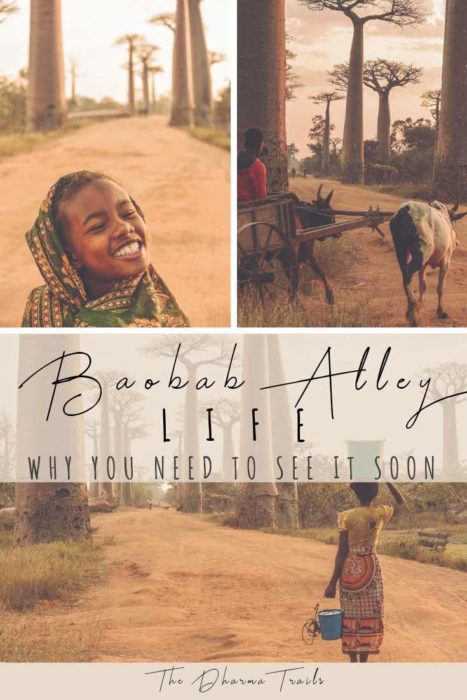
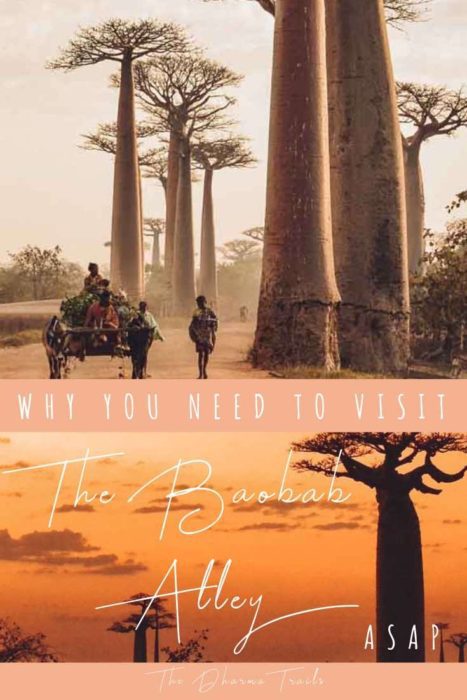
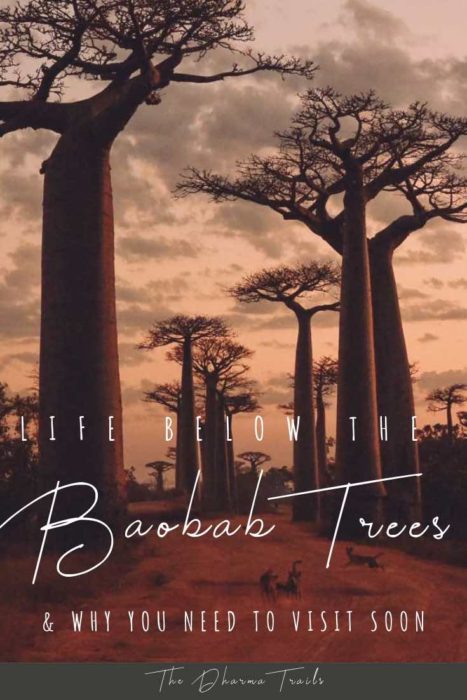

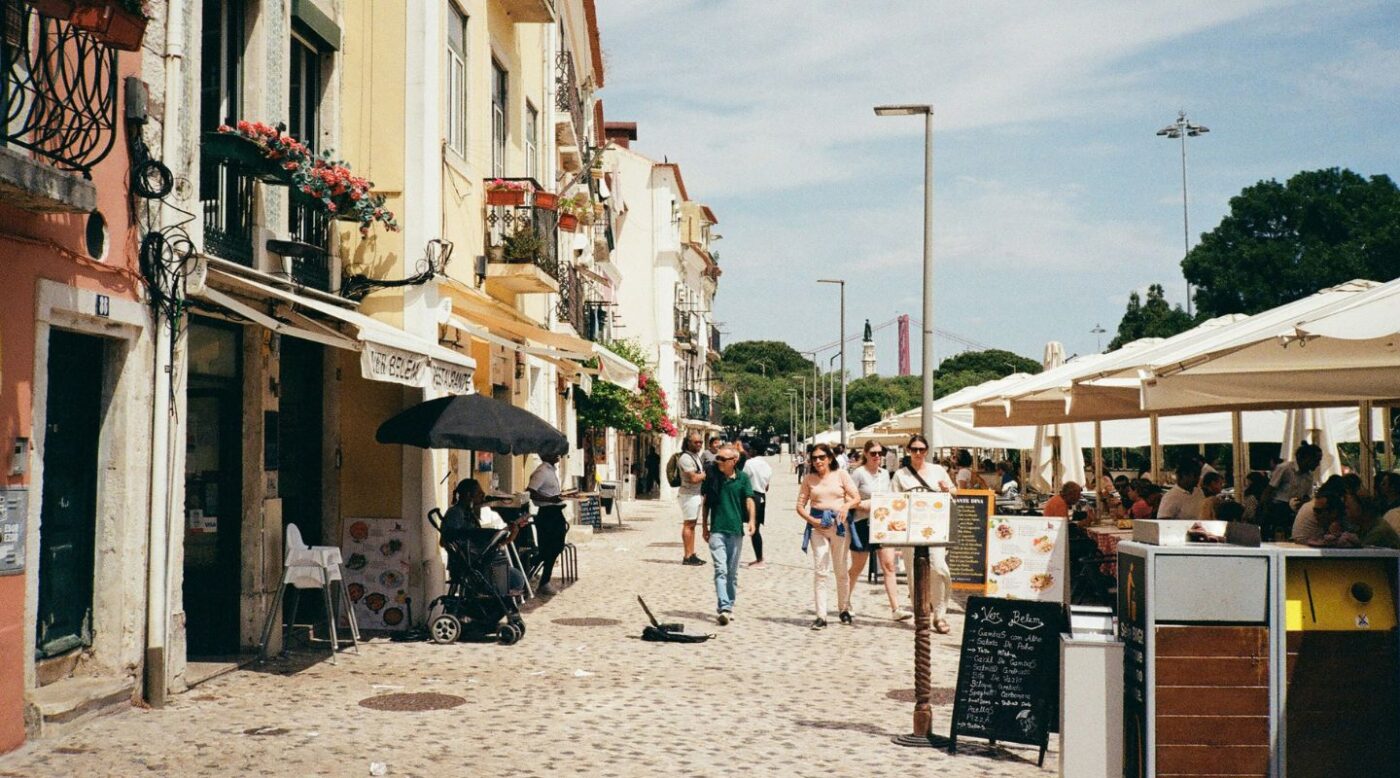


Thank you for posting this reminder of the fragile life on the edge of the world
A very helpful article and great photographs! Thank you! I have dreamed of traveling
to see the avenue of baobob trees! I am sorry to know that the people there are so “poor”
– Items made from the wood from downed baobob trees might be of some value/interest
to tourists as gifts? H.H.